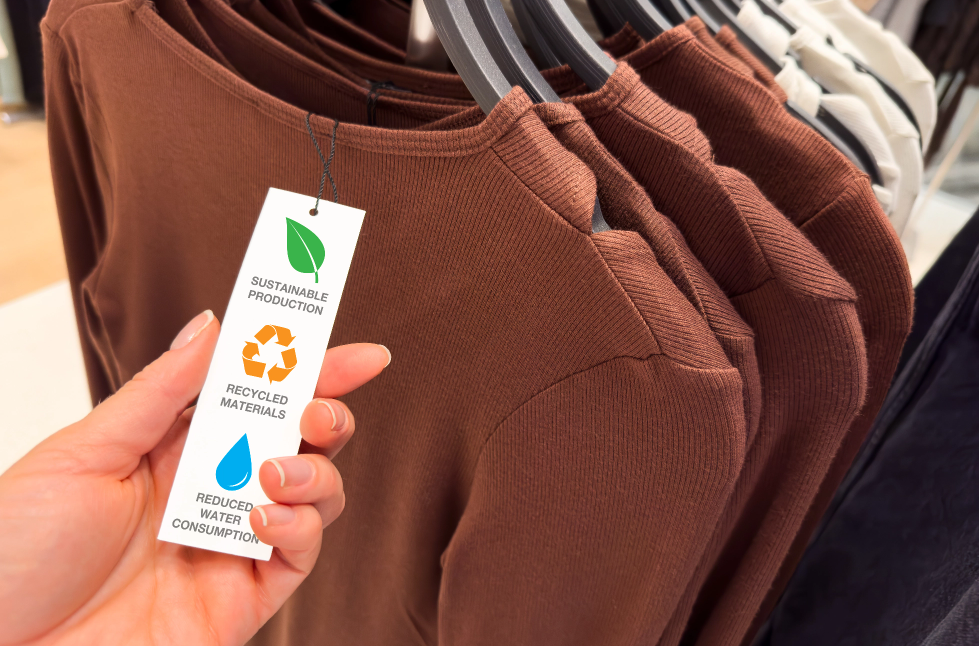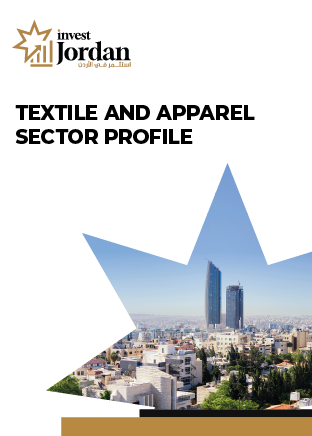Apparel and Textile in Jordan
Jordan’s textile and apparel sector is one of the country’s most lucrative, competitive, and promising
sectors. With a skilled, cost-effective workforce, high-quality production outputs, and a commitment to
technological innovation, the sector has the potential to cater to a growing international market.
Furthermore, with sustainable, eco-friendly practices being actively championed and adopted throughout
the industry, Jordan is rapidly distinguishing itself as a forward-thinking leader in responsible textile and
apparel manufacturing, in line with global trends.
Jordan’s Economic Modernization Vision (EMV) 2023-2033 identifies the textile and apparel sector as one
of the country’s key high-value industries. The sector is expected to generate thousands of
jobs over the next decade, representing around 15% of target employment by 2033.
Investing in Jordan’s textile and apparel sector presents an array of unique and lucrative opportunities for
local and international investors. With the numerous advantages and strengths of the industry, coupled
with the Jordanian government’s concerted efforts to promote and foster growth, the country’s textile
and apparel sector is poised to flourish over the next decade—and beyond.

1.8Bn
USD total exports
76,000
Workers
600M
USD GDP contributionHighlights of Jordan’s Textile and Apparel Sector
Why Invest in Jordan’s Textile and Apparel Sector?

As the global demand for high-quality textiles and apparel continues to grow, Jordan is well-positioned to meet this demand. The country already has a solid reputation for producing high-quality garments. This has helped local industry players secure contracts with major international brands and enabled the sector to attract new investors and expand its product range. Today, Jordan’s industry produces a wide array of products across 10 sub-sectors, including ready-to-wear garments, technical textiles, and home furnishings.

Jordan’s textile and apparel sector has made a concerted and strategic effort to prioritize innovation and sustainability across all operations and sub-sectors. Many companies have adopted advanced technologies to improve efficiency and reduce their environmental impact. The sector’s focus on sustainability has also attracted eco-conscious investors, who recognize the enormous potential for growth in sustainable and ethical fashion. As a result, Jordan is increasingly being recognized as a responsible manufacturing hub, further enhancing its appeal as an investment destination.

Another important factor driving investment in Jordan’s textile and apparel industry is its skilled and costeffective workforce. The country boasts a young and well-educated population, with a literacy rate of 98%. Furthermore, Jordan has a well-established vocational training system, which is continuously being upgraded to meet the evolving needs of the industry. Jordan also offers competitive labor costs compared to other countries in the region. This cost advantage, coupled with the country’s high-quality workforce, is instrumental in attracting foreign investments and driving the growth of the sector.

The establishment of export-oriented manufacturing hubs in key industrial zones has been instrumental in attracting foreign investments and promoting textile and apparel export growth. These hubs, equipped with state-of-the-art infrastructure and facilities, provide a favorable environment for investors to set up their operations and serve international markets.

Jordan’s textile and apparel sector offers a wide array of investment opportunities, bolstered by a variety of government incentives, such as tariff- and quota-free access to the US market. These opportunities cover a wide range of sub-sectors and operations, including technical textiles, sustainable manufacturing, design innovation, and vertical integration. Investors can capitalize on these various opportunities to build a diversified and robust portfolio within the industry.
- - Technical Textiles: This segment includes specialized textiles for specific uses and functions, including protective clothing, medical textiles, automotive fabrics, and sports apparel.
- - Home Textiles and Furnishings: There is significant potential for growth in the production of home textiles and furnishings, including the production of bedding, curtains, and upholstery.
- - Niche Apparel: Investments in niche apparel segments like sportswear, performance wear, and luxury fashion can help investors differentiate themselves from competitors and target high-value market segments. These segments often demand specialized skills and knowledge, which can be developed through targeted training and partnerships.
- - Vertical Integration:: Investment in the vertical integration of the supply chain can help companies reduce costs, improve efficiency, and have better control over their production processes. Opportunities for vertical integration include investing in facilities for the spinning, weaving, knitting, dyeing, and finishing of textiles, which can help further position Jordan as an end-to-end production hub.





